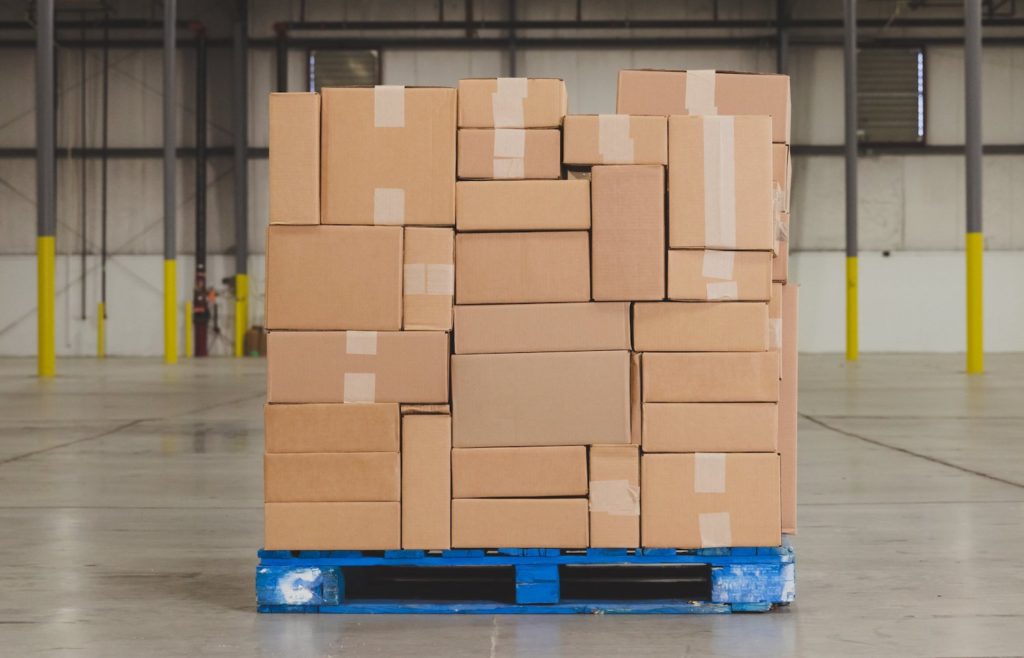
Reduce Risk with Supply Chain Predictive Analytics
Supply Chain Predictive Analytics Is All about Customer Service
Most people will tell you that in this day of shrinking margins and competitive products, service makes all of the difference. Lost revenue must be accounted for elsewhere, making the delivery of above-average service a critical leverage point. For increasingly more companies, supply chain predictive analytics is giving them the competitive advantage they seek as they are empowered with better data.
Predictive analytics is now being leveraged by a wide variety of industries across the globe. The predictive analytics market is expected to grow from $4.56 billion in 2017 to $12.41 billion in 2022. Companies are able to predict future supply chain activities using supply chain predictive analytics. MarketsandMarkets says, “The major reason for the rising adoption of predictive analytics can be attributed to the need for minimizing the risks and frauds that occur every day.”
Supply chain predictive analytics is giving companies a bit of relief from the many risks inherent with the supply chain. Every stakeholder in the supply chain must work together in lock-step in order for the end customer to get what they expect. There can be global suppliers, vendors, manufacturers and retailers involved. One misstep by one and the entire supply chain can come to a screeching halt, disappointing customers who may be willing to go to the competitor if they believe they can get better service elsewhere. It’s an all-too-common risk that companies strive to avoid.
Related: Supply Chain Risk Management
The Relationship between Supply Chain Predictive Analytics and Effective Risk Management
The symbiotic relationship between risk management and customer service is well-documented. The Harvard Business Review, for instance, found that the obvious benefit of risk management is the reduction of waste, duplication in the supply chain, and costs, but savvy companies are recognizing an added advantage: the power to impact customer satisfaction. A service mishap can have a similar effect on the business as a production disruption from any of the supply chain stakeholders and one often leads to the other.
It is critical for shippers and brokers to minimize risks, but they must do the best they can to identify all of their risks, seen and unseen – before they ship. Supply chain risk management (SCRM) strategies help, outlining a specific process to discovery. Not all risks are equal. Some are more likely than others, some are more or less severe. While some pop up on a regular basis, quite a few are unknown. Those, of course, are challenging to predict, but they can often be the most disruptive to the supply chain and threaten any hopes of on-time delivery. Natural disasters, for example, can wreak havoc and give little warning.
When you ask customers what matters most to them with regards to service, many will say on-time delivery. Late deliveries aren’t just a hassle, they frequently determine whether the customer can deliver their product to their end customers on time. Every stakeholder in the supply chain has its own customer satisfaction to consider.
Related: Transportation Risk Management: A Guide
The important factor for companies to consider is it’s a team effort. When all supply chain stakeholders are doing their part to keep their operations humming, the supply chain runs without interruption. It takes only a seemingly small delay anywhere up or down the line to cause ripple effects that ultimately impact one or more bottom lines. According to supplychaindive.com, “Disaster can strike at any stage or level of the supply chain, so responsibility extends to logistics and procurement professionals. It takes a village to ensure supply chain resilience.”
How Supply Chain Predictive Analytics Is Changing Logistics
Manufacturing organizations are used to risk assessments. Risk can be complicated. Thorough assessment includes being able to go beyond identifying known risks to predicting what may happen at any leg of the product journey. Here’s where logistics plays a critical role. Logistics is the enabler. No one link in the supply chain can effectively execute their role without receiving and/or delivering a part or product. That takes shipping. For the inexperienced, shipping appears to be the easiest factor in the supply chain, but in reality, it is one of the biggest risks to on-time deliveries and satisfied customers.
Supply chain predictive analytics is shining a bright light on the hidden and known logistics risks. With the right data in hand, companies can be more proactive in ensuring their products get to their end customers on time and in good condition. The “right data” isn’t found by manually checking weather radars or traffic patterns. It’s significantly more. Big data needs the power of automation and predictive analytics is dependent upon automation.
Using automated technology offers several benefits. First, it considers more data, data that is often inaccessible and overwhelming any other way. Secondly, the algorithms ensure accuracy because human error is removed. Next, automated technology works quickly and at scale, giving decision-makers actionable data sooner so they can make faster decisions. Being able to predict risks up to 10 days before tender means companies have time. They aren’t reacting in crisis mode but being proactive in how they manage shipments, changing course before a disruption causes impact, or setting proper customer expectations if the risk can’t be avoided.
Supply chain predictive analytics software detects risks such as:
Inclement Weather
Bad weather is a constant threat. Whether it’s an epic snowstorm, a severe storm outbreak or icy roads, shipments are vulnerable. Nowhere on the planet is immune. With many shipment routes extending across multiple states and regions, it becomes nearly impossible to manually identify and track all potential weather threats along every route every day at all hours of the day. This is where automated technology shines. Unlike human resources, the software is built to automatically collect data from many sources on a continual basis for as many as 10 days prior to shipment. The benefit, however, comes when the software analyzes and displays the data in a graphical way so decision-makers can easily see where the threats are at any given time of day per lane, market or plant; how severe and probable those risks are; and even present alternatives. This is data that requires little-to-no effort from the users.
Related: How Shippers Can Reduce Freight Spend Using Weather as a Strategic Advantage
Extreme Temperatures
On-time deliveries are only one aspect that affects customer satisfaction. Customers must also receive their parts or products in good condition. Extreme temperatures can quickly render produce, dairy, meats, pharmaceuticals and other temperature-sensitive items as unusable. Predictive analytics software monitors current and predicted temperatures along the routes and flags any areas where extreme temperatures may put cargo at risk. Keep in mind, these warnings come before the product leaves the dock, giving decision-makers time to prepare. Perhaps refrigerated trucks are necessary to protect the freight. Perhaps colder temperatures mean companies can save money by not using reefer trucks. Maybe the best course of action is to select an alternate lane or shift the shipment date. In any of these situations, companies have the control.
Social Hazards
Social hazards can be anything from planned political rallies and parades to criminal activity that renders a lane inaccessible or will cause significant delays. Some social hazards are predetermined and easy to plan around, yet others spring up without warning. Shippers and brokers need access to as much information as possible so they can avoid any interruptions or damage to their cargo. Fortunately, supply chain predictive analytics software considers present and future risks automatically, giving decision-makers a comprehensive view of what each shipment faces, even if the probability is low.
Natural Disaster Impact Zones
Most natural disasters give us a warning. Hurricanes, for example, can be tracked in their infancy weeks ahead of landfall. Wildfires, earthquakes and landslides are less predictable. Unfortunately, shipping lanes are often highly vulnerable to natural disasters – during impact and for days and weeks after the event. Predictive analytics can give companies precious time to adjust timing, routes and more to minimize the impact such events have on logistics.
Related: The Florence Effect on Logistics
Infrastructure Outages
Even while we often focus more on the weather in logistics, Infrastructure outages cause the most interruptions. When you consider how many roads and bridges every shipment passes over, and how many miles are traveled, it’s no wonder infrastructure outages are such a common threat. Some infrastructure outages are as simple as a traffic jam or construction, while others can be more time-consuming to maneuver. On-time deliveries are at risk and some lane issues can even damage cargo, particularly if bad weather or extreme temperatures accompany the outage. Predictive analytics provide insight into the location, severity and likelihood of such outages as the shipment travels through that specific area. The software is so smart, it analyzes the timing of those outages with the timing of the shipment. This data makes it easy for decision-makers to change plans to ensure cargo makes it to its destination on time and in good condition.
Empowering Decisions with Supply Chain Predictive Analytics
With so much data readily available, it’s easy to see why companies need to invest in technology in order to access it. The traditional data collection processes of the past are not sufficient. They miss too much data and fail to provide a comprehensive picture decision-makers need to make quick but confident decisions.
Logistics is all about timing. The longer it takes to get the data, the more risk is introduced. But, with supply chain predictive analytics, leaders have data in hand to make decisions early in the planning phase that can increase the likelihood of more on-time, in-full deliveries. This ultimately increases profits and customer satisfaction.



